Diane Porter of Fairfield first published this post on My Gaia, an email newsletter “about getting to know nature” and “giving her a helping hand in our own backyards.” Diane also maintains the Birdwatching Dot Com website and bird blog.
On stems up to 12 feet tall, the yellow blossoms of Compass Plant (Silphium laciniatum) tower over other wildflowers. Down below, the roots reach into the earth as deep as 16 feet.
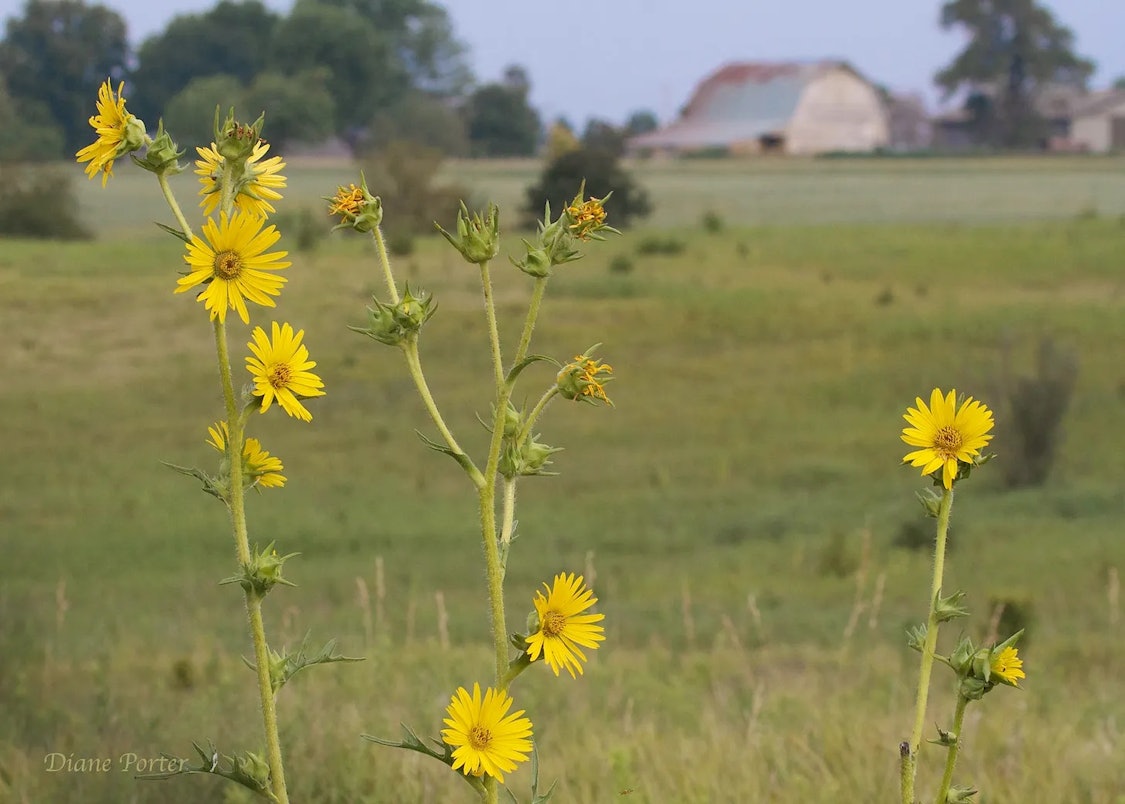
Compass Plants, a remnant of the Midwest tallgrass prairie
Compass Plants know how to endure. For thousands of years, they reigned over the tallgrass prairie that originally covered what is now Iowa and the Midwest. Although the works of man have almost completely replaced the prairie, a few Compass Plants are still here. Without being planted, watered, or tended, they rise beside country roads and in old pastures.
Tallest flower on the prairie:
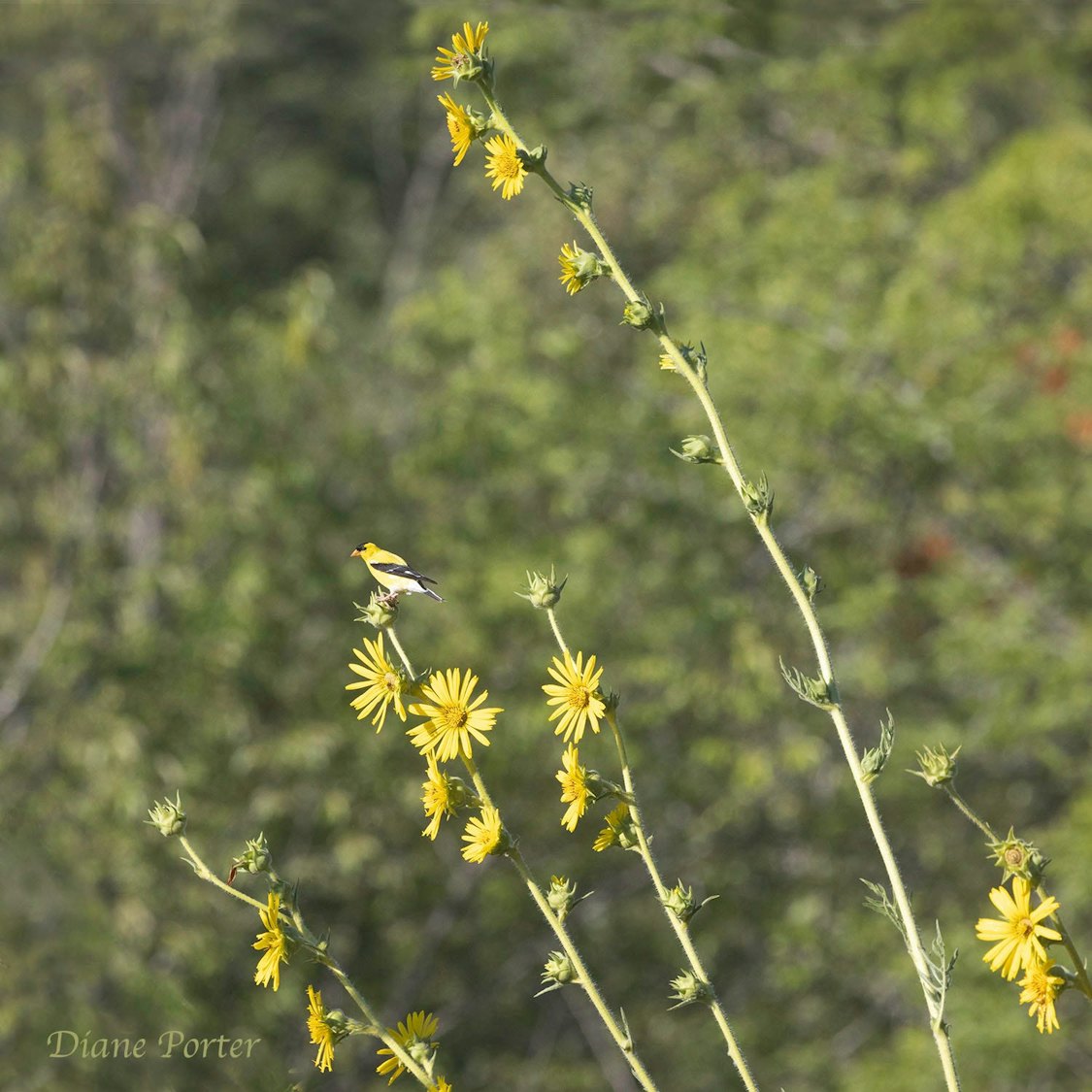
The flower head:
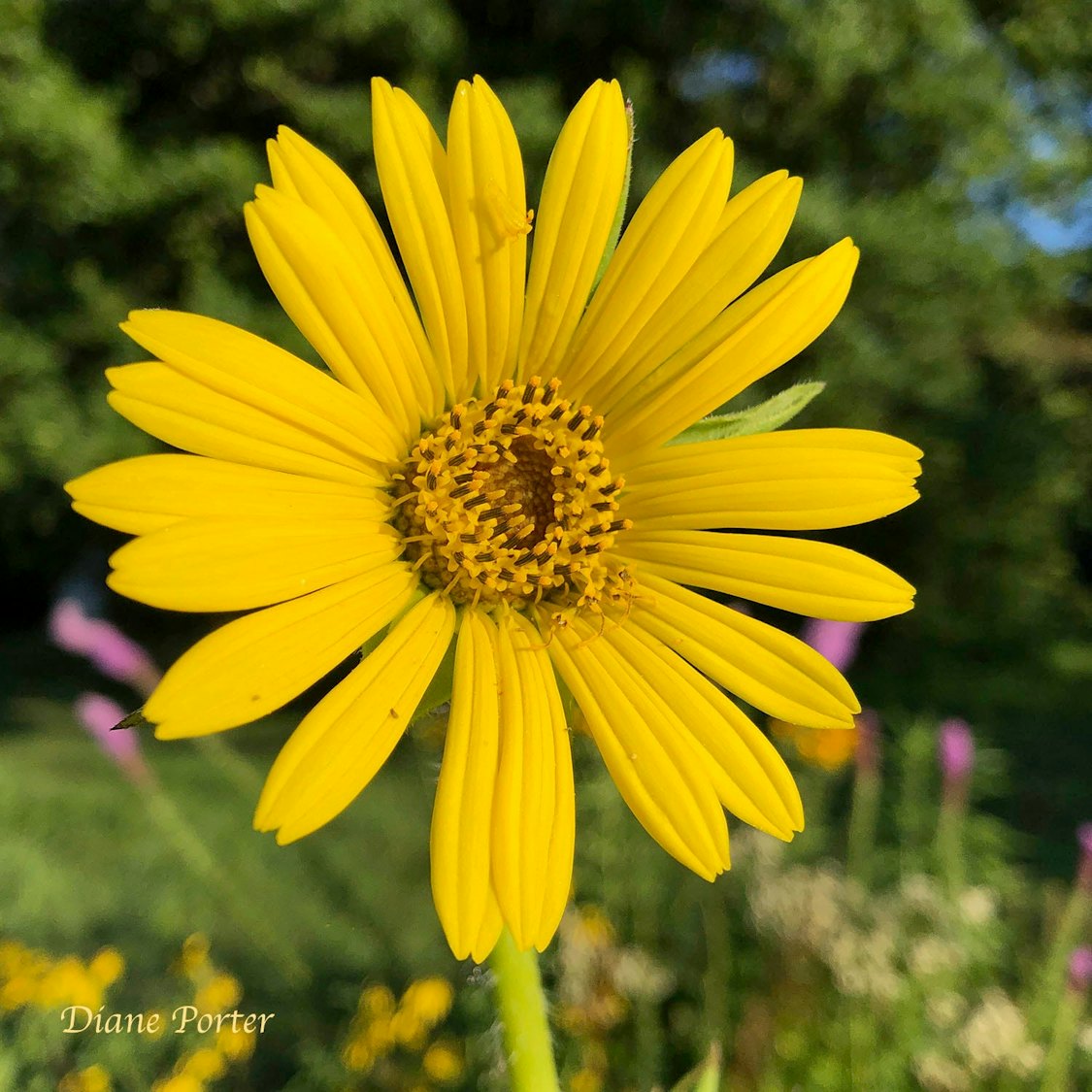
Compass plant is dinosauric: ancient, rough-textured, and vigorous. With its life protected in thick roots, far below the surface, it rises again after fires and can survive extended drought.
The sap is thick and resinous. Native American children used it as chewing gum.
The sandpaper-rough leaves are deeply lobed. They’re flat, like a sheet of paper, held vertically.
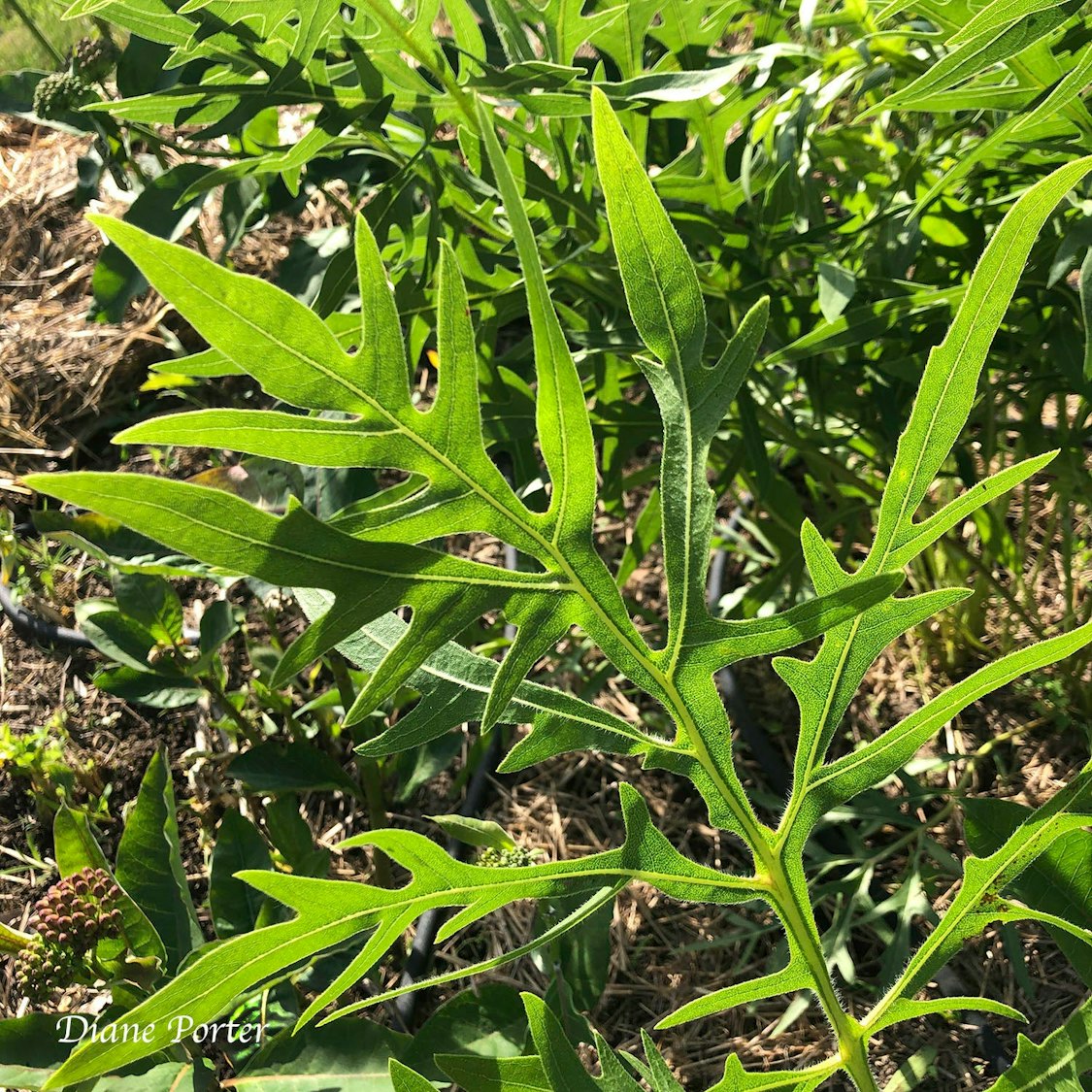
Compass plant leaves tend to line up north to south, making the broad surfaces face east and west. Thus sunlight shines strongly on the east-facing side of a leaf in the morning and on the west-facing side in the afternoon. This maximizes photosynthesis. And during the scorching heat of midday, the overhead sun strikes only the thin edge of the leaf. This lets the plant conserve water.
Reports from the 1800s say that pioneers and early settlers traveling across the prairie by covered wagon used the orientation of the leaves to divine their direction in the vast sea of grass. Hence the name, Compass Plant.
Each flower head is up to 4 inches wide.
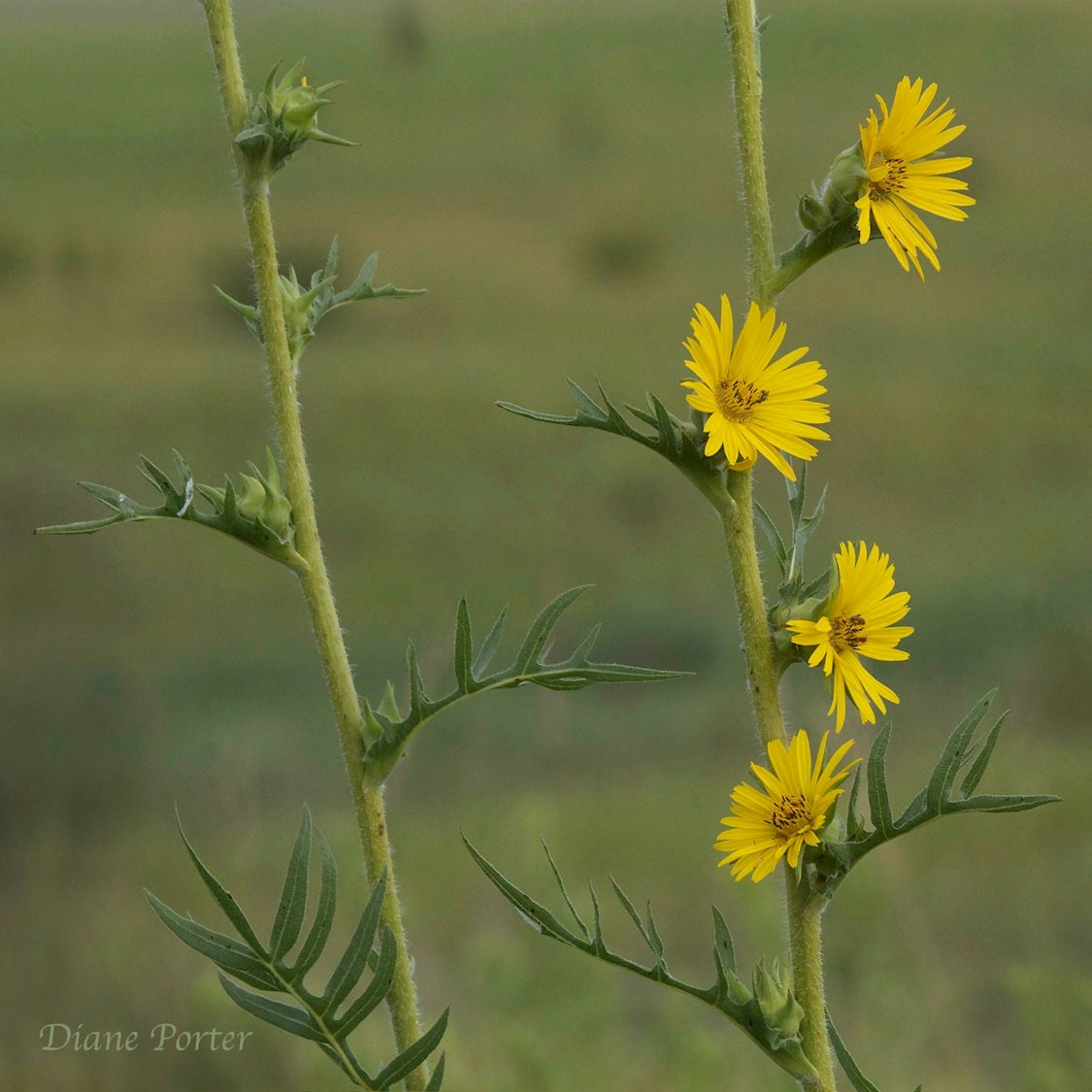
Bird food:
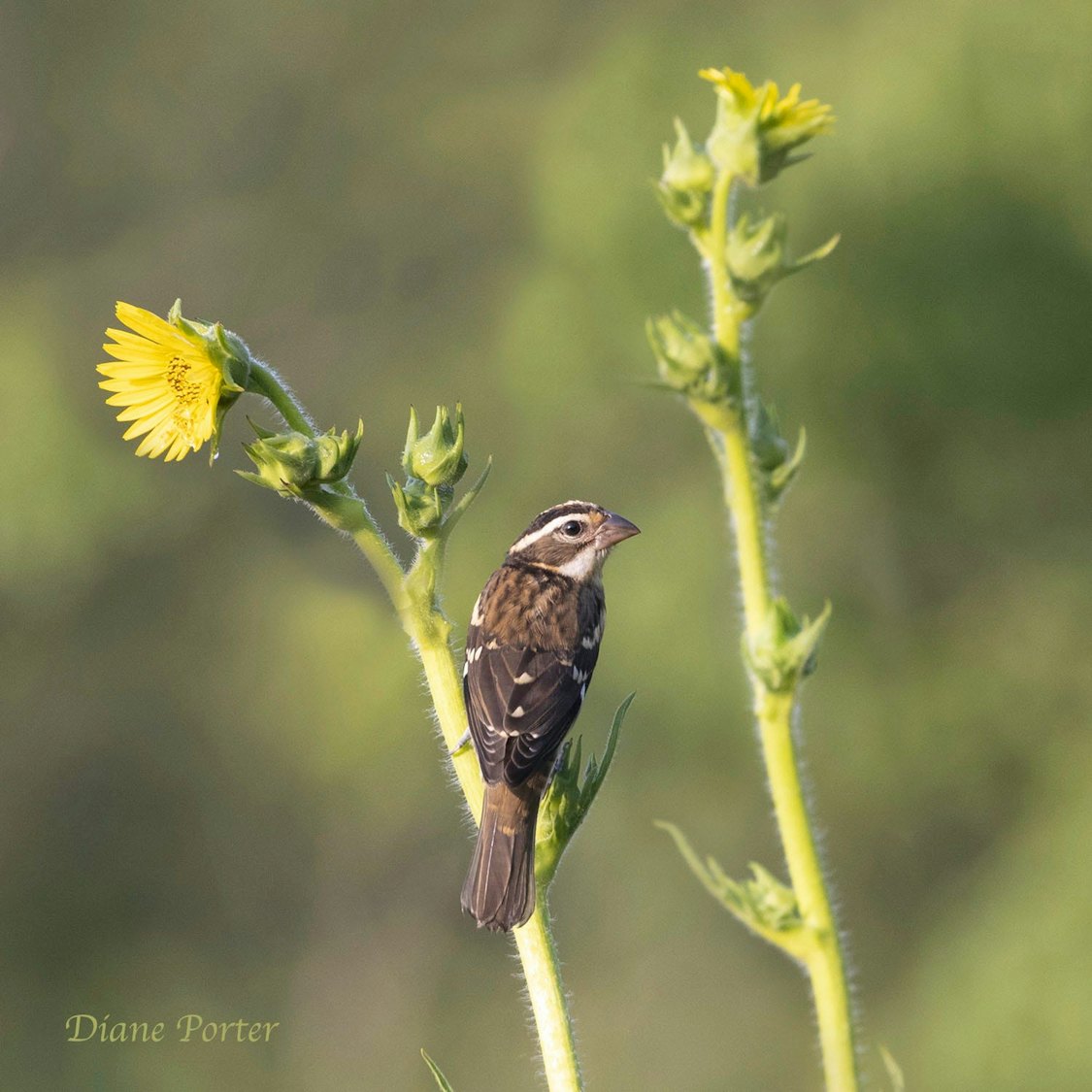
Nectar for butterflies:
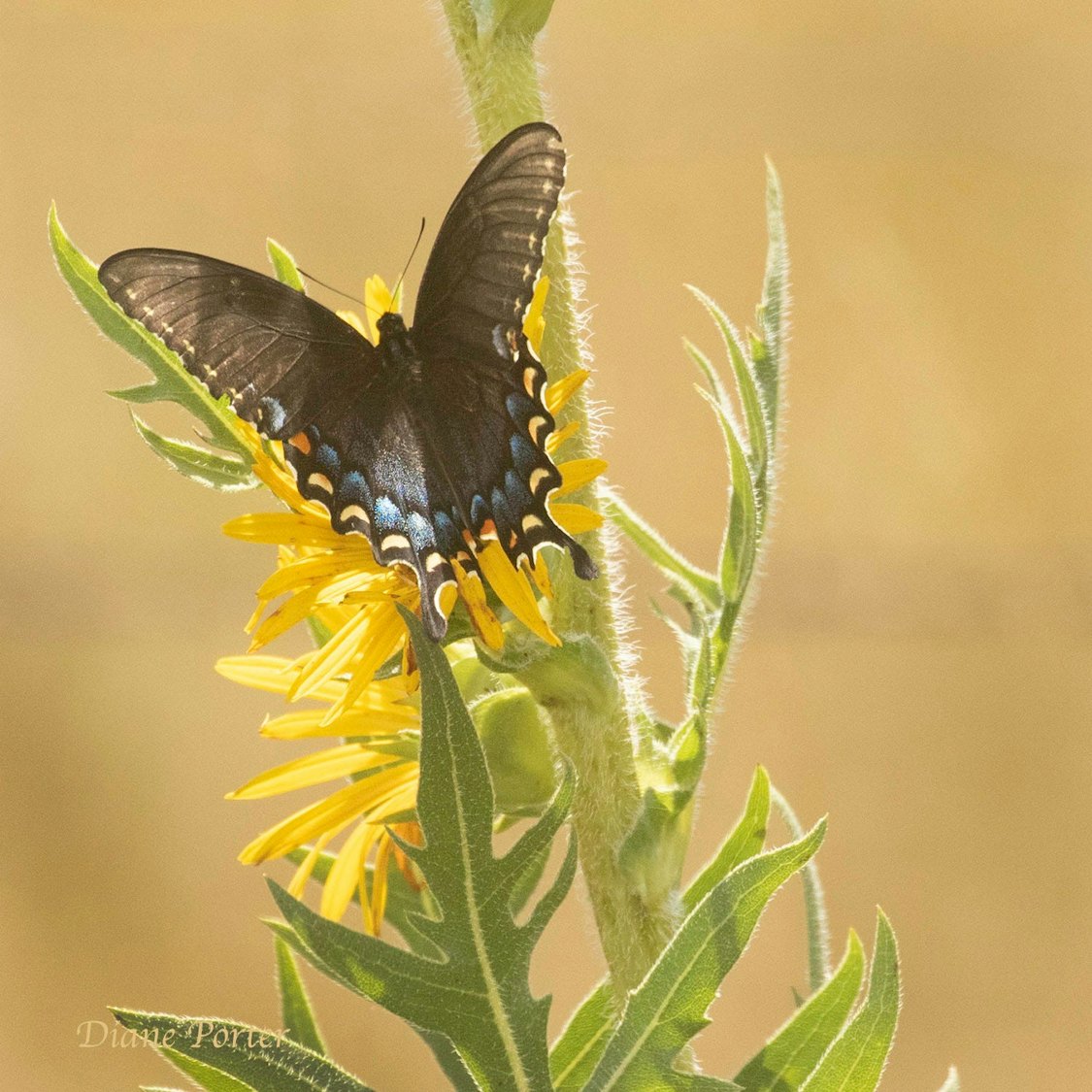
Gifts of the compass plant
The deep roots build soil by creating channels for water to penetrate into the ground, by bringing up minerals to the surface, and by contributing their remains to the earth when at last they die.
The seeds are big and nutritious, like sunflower seeds. When they fall from the plant, if birds and other wildlife don’t eat them, the seeds start new plants within a few feet of the parent plant. This is why we often see colonies of compass plants.
A big seed germinating:
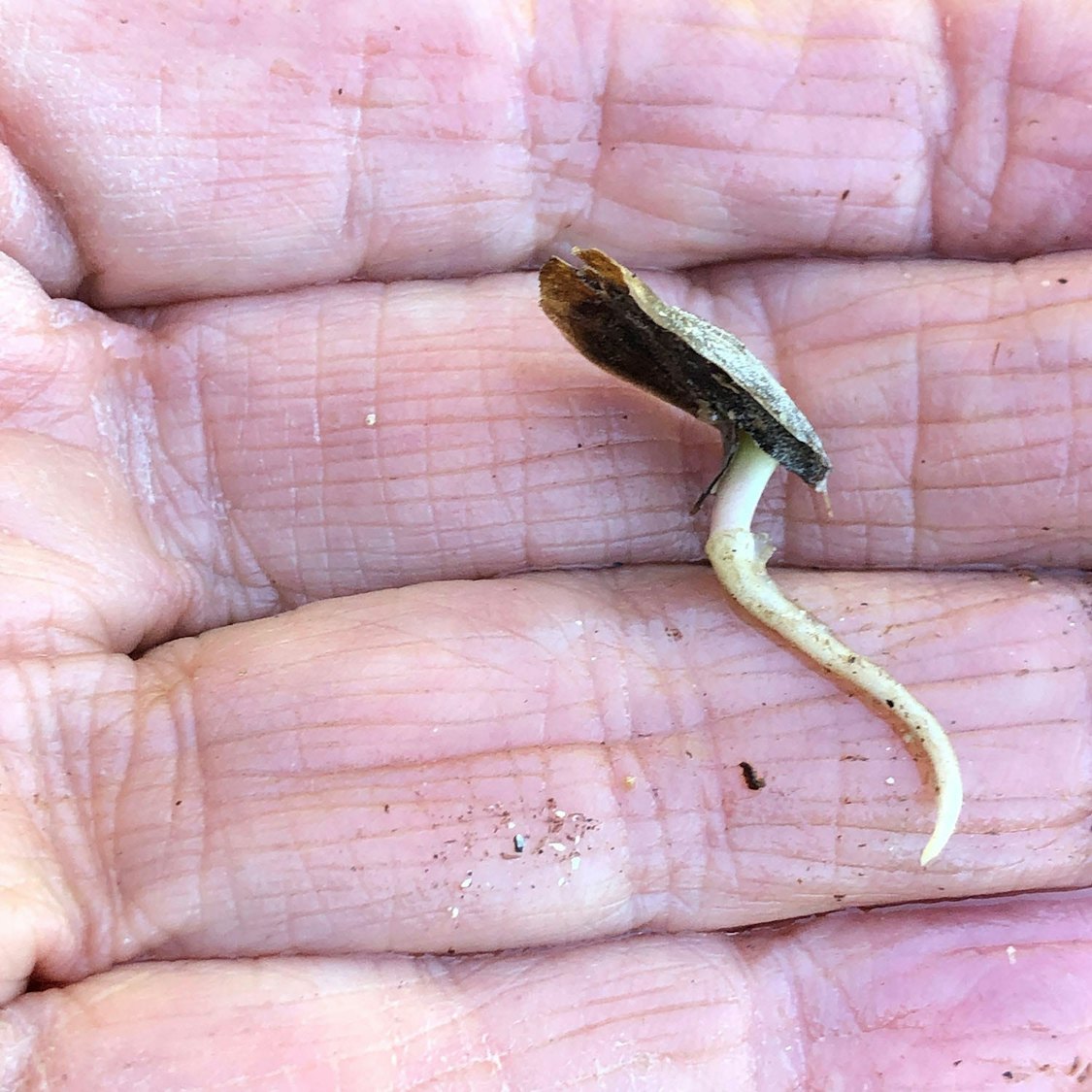
When the compass plants are young, they are tasty. In nature, probably most of them get eaten as soon as they come up. When I started them in my wildflower garden, I had to put a small, wire-mesh fence around each seedling. After they are two or three years old, they have such tough stalks, covered by stiff hairs, that they no longer need that protection.
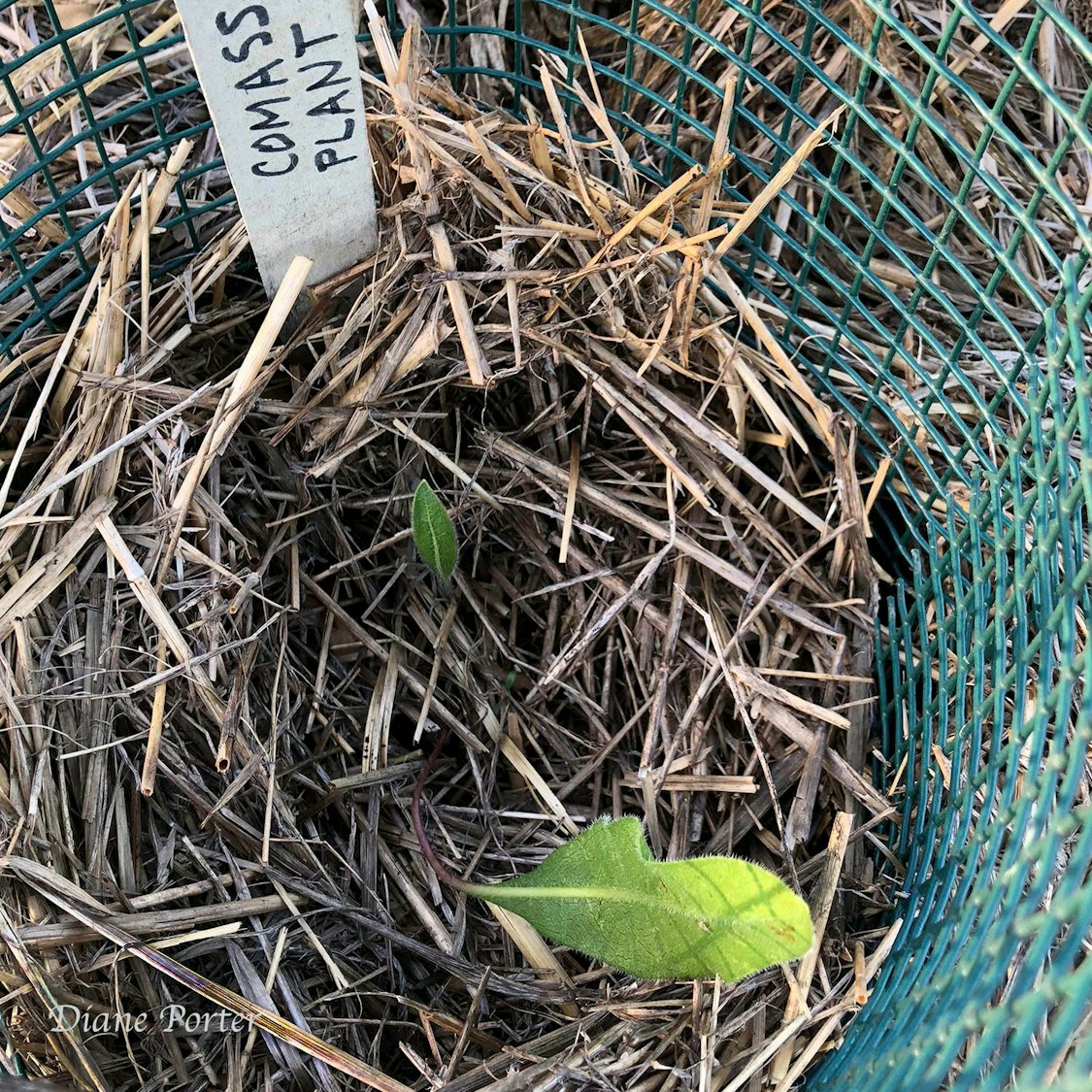
Spiky seed heads:
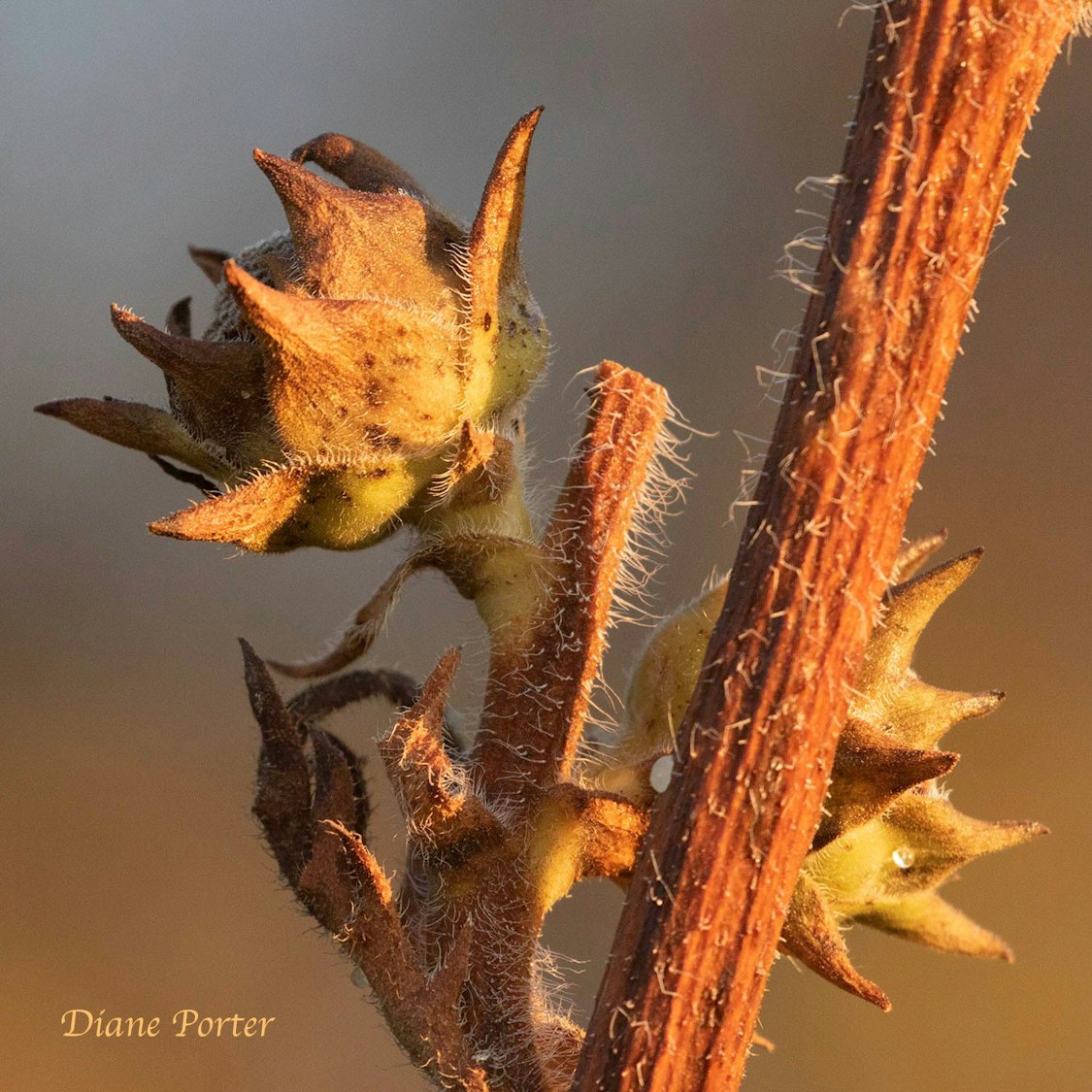
A compass plant may live for 100 years.
When you make space for one in your life, you’re taking a stand to protect what we cannot bear to lose. It’s well worth a two-to-four-year wait to see the blossoms.
It is my dream that someday this archetypal plant of the prairie will be common again in the Midwest, in our backyards and gardens. I long to see compass plants nodding conversationally toward each other above the tops of the tallest fences.
Growing them can be your gift to the future.

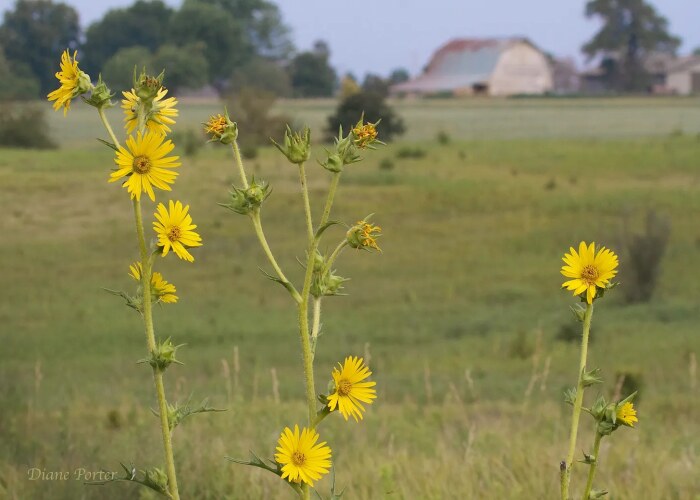
1 Comment
Nice post, nice photos, thank you, Diane Porter!
As someone whose property has compass plants, I give some credit to Aldo Leopold. One of his lovely essays ends with “Few grieved when the last buffalo left Wisconsin, and few will grieve when the last Silphium follows him to the lush prairies of the never-never land.”
I am very certain that some other Leopold readers also vowed to themselves, after reading that, “Silphiums will not be allowed to disappear from THIS place, not on my watch.”
PrairieFan Sun 3 Sep 4:32 PM